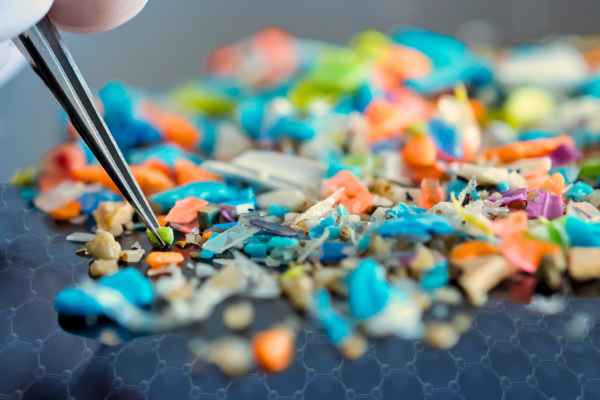Plastic trash to treasure
Microplastics are being upcycled in an instant into valuable graphene in the lab.

Scientists at James Cook University (JCU) have found a way to turn harmful microplastics into graphene in just one minute.
Graphene is a valuable material used in the manufacturing of sensors and water purification systems and this breakthrough, they say, represents a significant step forward in microplastics recycling.
Using a technique called Atmospheric Pressure Microwave Plasma synthesis, the JCU researchers managed to produce about 5 mg of graphene from 30 mg of microplastics in just one minute, a production rate much higher than previous methods.
"Upcycling is in high demand as it transforms plastic waste into higher-value materials rather than simply breaking it down."
Microplastics - tiny plastic particles less than five millimetres in size - are created when larger plastic waste breaks down. And these particles are notorious for being non-degradable and insoluble in water, according to JCU Professor Mohan Jacob, and pose a growing threat to fish, animals, and humans.
It’s also estimated that up to 14 million tonnes of microplastics litter the ocean floor - 35 times more than the amount floating on the surface. These tiny particles can absorb harmful pollutants, which are then ingested by marine life and humans through the food chain, disrupting marine ecosystems and potentially posing health risks.
Brain drain
In a recent US study, microplastics were found in human brains for the first time. The study, which is still awaiting peer review, found the amount of microplastics in brain samples was 30 times higher than in the liver and kidneys and had increased by around 50 percent since 2016.
Microplastics now make up 0.5% of the brain’s weight, according to the researchers.
"That would mean that our brains today are 99.5% brain and the rest is plastic," said lead study author Matthew Campen, a regents’ professor of pharmaceutical sciences at the University of New Mexico in Albuquerque.
The graphene produced by the JCU team, meanwhile, has potential application in manufacturing sensors and in purifying water by absorbing harmful chemicals like PFAS, which are widespread environmental contaminants.
"Upcycling is in high demand as it transforms plastic waste into higher-value materials rather than simply breaking it down,” JCU’s Dr Adeel Zafar said.
Prof Jacob noted that this research not only introduces a new method for synthesising graphene but also contributes to reducing the harmful effects of microplastic pollution on ecosystems.
The JCU team used a technique called Atmospheric Pressure Microwave Plasma synthesis to grind plastic bottles into microplastics and convert them into graphene - a one-atom-thick carbon material that is harder than diamond, 200 times stronger than steel, and five times lighter than aluminium. Using this method they produced around 5 mg of graphene from 30 mg of microplastics in just one minute, a production rate much higher than previous methods. This new approach is also simpler and more environmentally friendly compared to existing techniques for making graphene.





